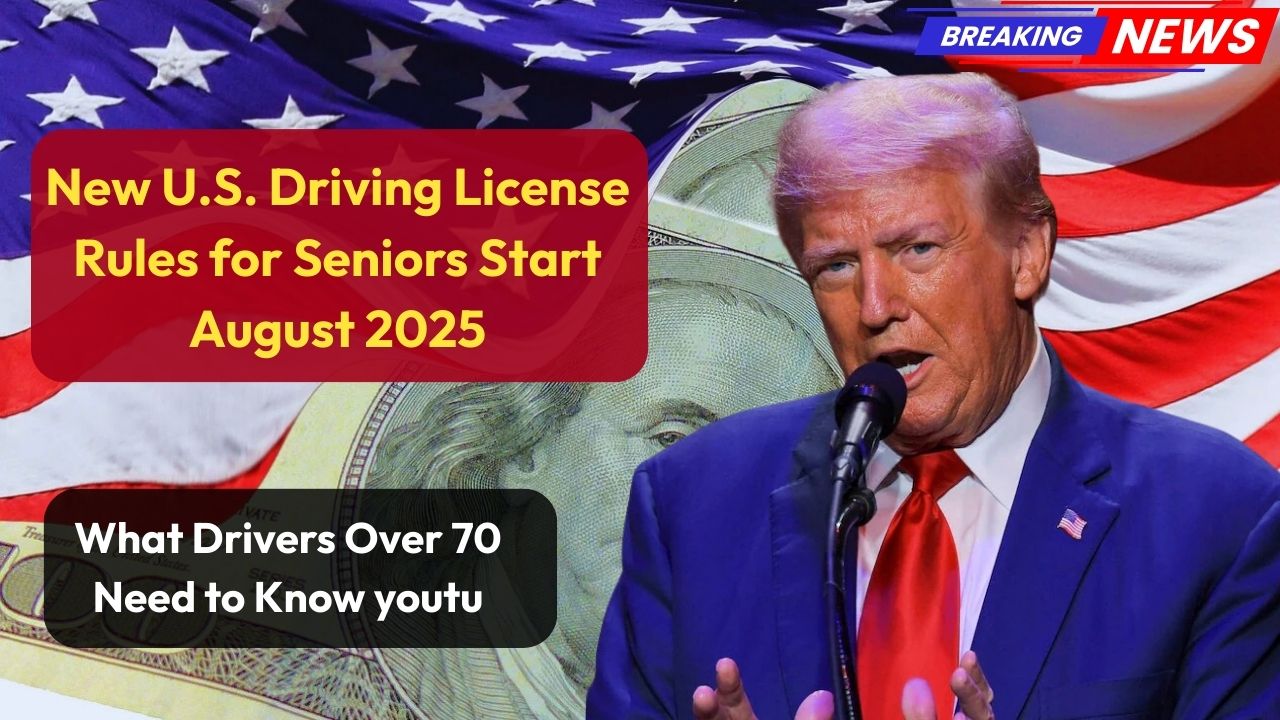America’s senior population is growing — and so is the number of older drivers. By August 2025, a new U.S. driving license law will take effect, focusing on drivers aged 70 and above.
This is not about taking away your keys. Instead, it’s about making sure every driver — young or old — is safe and capable on the road. Think of it as a tune-up for your driving skills, not a crackdown.
Why This Law Was Introduced
Today, about 48 million Americans aged 65+ hold a valid driver’s license. According to the National Highway Traffic Safety Administration (NHTSA), that number will grow sharply over the next 20 years.
While staying mobile is essential for independence, aging can affect:
- Reaction times
- Night vision
- Cognitive processing
These changes matter when you’re traveling at highway speeds. The new law aims to balance road safety with independence.
How the Tiered Renewal System Works
Instead of setting a mandatory retirement age for driving, the law introduces a tiered renewal schedule based on age and ability.
| Age Group | Renewal Frequency | Additional Requirements |
|---|---|---|
| 70–79 | Every 4 years | Vision test (in person or telehealth in some states) |
| 80–86 | Every 2 years | Vision + reaction time/cognitive screening |
| 87+ | Annually | Full in-person driving assessment |
Reporting Unsafe Driving
Family members, doctors, or concerned community members can report unsafe drivers to the DMV.
If reported, you may need to complete:
- A medical evaluation
- A road skills test
This is designed to prevent accidents — not to encourage unnecessary complaints.
Differences by State
Because licensing is managed at the state level, requirements may vary:
- Some states allow telehealth vision tests
- Others require in-person evaluations
- Rollout dates may differ
Example: California’s DMV Senior Guide already outlines similar testing policies.
Restricted Licenses – A Middle Option
If you don’t pass every test, you might still qualify for a restricted license, which could:
- Limit driving to daylight hours
- Restrict travel to local areas
- Avoid high-speed roads
This helps seniors maintain mobility while reducing risks.
Planning for the Transition
When it’s time to stop driving, you have options:
- Ride-share apps like Uber and Lyft
- Community senior shuttles
- Public transportation with senior discounts
- Free or reduced-fare programs in some cities
These alternatives ensure you can still get where you need to go — without feeling isolated.
Quick FAQs
Will I lose my license at a certain age?
No. This law changes how often and how thoroughly your license is renewed.
Who is affected?
Drivers 70+, with annual testing for those 87+.
Can someone report me as unsafe?
Yes. The DMV may require an evaluation if a valid concern is raised.
Do I need to renew in person every time?
Not always. Some states offer telehealth vision checks.
What happens if I fail part of the test?
You may receive a restricted license instead of losing driving privileges completely.
Bottom Line
The August 2025 senior driving law focuses on ability, not age. By preparing early — booking your vision check, staying alert behind the wheel, and knowing your state’s rules — you can keep driving safely for years to come.



